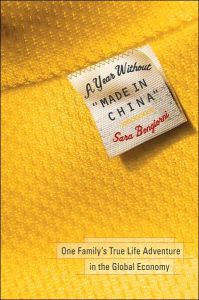Melden Sie sich bei getAbstract an, um die Zusammenfassung zu erhalten.

Melden Sie sich bei getAbstract an, um die Zusammenfassung zu erhalten.
Sara Bongiorni
A Year Without "Made in China"
One Family's True Life Adventure in the Global Economy
Wiley, 2007
Was ist drin?
Is it possible for a family to live for 12 months without shoes, toys, electronics and trinkets produced by China?
Recommendation
From head to toe, American consumers are walking advertisements for products from China. But few shoppers realize the depth and national economic implications of their dependence on "Made-in-China" goods. Writing with heart and precision, Sara Bongiorni – who decided that her family wouldn't buy Chinese merchandise for a year – uses trade data, shopping mishaps and family squabbles to outline the complex relationship between Chinese merchandise, U.S. consumers and American job loss. Her narrative is funny, factual and entertaining. She delivers insightful lessons about trade, manufacturing and finance. The author attempts to avoid China-bashing and repeatedly mentions her distant Chinese ancestry, but the book occasionally steps into the uncomfortable territory of nationalism on the subject of race and international commerce. Still, this is a delightful, informative read. getAbstract recommends it for every shopping list.
Summary
About the Author
Sara Bongiorni, a seasoned business reporter, has written for daily newspapers and regional periodicals in Louisiana and California.






















Comment on this summary